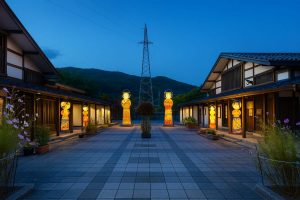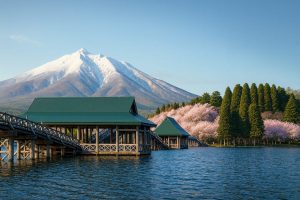| Population | 4,254 people |
|---|---|
| Area | 52.09 km² |
| Population Density | 81.67 people/km² |
The history of Ooma Town in Aomori Prefecture, located at the northernmost tip of Japan, dates back to the Nara period. Since then, it has marked its history of development, achieving further growth with the opening of Ooma Port. Ooma Town is known as one of Japan’s leading centers for tuna fishing and is also focusing on pioneering new industries, such as wind power generation. The lifestyle here revolves around fishing as the main livelihood, enriched by a rich natural environment, while the influence of the Tsugaru dialect remains strong, preserving a sense of traditional living. Throughout the year, festivals such as the traditional “Tuna Festival” and the “Ooma Shrine Grand Festival” are held, deepening the bonds among the local community. Ooma Town is a charming region where tradition and new initiatives coexist. The local people incorporate flavorful seafood into their daily meals, leading healthy and vibrant lives. Additionally, there are well-equipped museums and information centers for learning about the region’s history and culture, allowing visiting tourists to enjoy both nature and history.
Culture and Customs
Ooma Town in Aomori Prefecture has a history of development dating back to the Nara period, with the opening of Ooma Port greatly contributing to its growth. The town’s main industry is particularly known for tuna fishing and has also become a pioneer in wind power generation. The lifestyle is centered around fishing, allowing for a life blessed with a rich natural environment. Furthermore, the influence of the Tsugaru dialect can be seen in the language and customs, with the Tuna Festival being especially cherished by the locals. Local festivals such as the “Ooma Shrine Grand Festival” and the “Ooma Tuna Festival” are grandly held, showcasing a unified celebration of the entire town several times a year. These reflect the culture of Ooma Town and leave a deep impression on visitors. It can be said that Ooma Town embodies both the charm of old Japan and the preparations for a new era. This dynamism is one of the attractions of Ooma Town. Additionally, the unique sound of the Tsugaru dialect is alive in the daily conversations of the townspeople. Within their lives, an ecological perspective utilizing wind power can also be observed, strongly reflecting a regional identity where the old and new merge.
Local Specialties
- Ooma Tuna: The tuna caught in this region is characterized by its rich fat content and flavor, loved throughout Japan.
- Ooma Garlic: One of the local specialties that grows well in cold weather, known for its pungent flavor and aroma.
- Ooma Wakame: Wakame grown in the cold currents has a unique texture and flavor.
- Ooma Kombu: Harvested from the deep sea, this kombu is an essential ingredient in various dishes due to its rich umami.
- Ooma Oysters: Grown using the cold climate, these oysters are known for their thick meat and rich flavor.
Annual Events
- Ooma Tuna Festival: Held every August, this local festival offers free fresh Ooma tuna sashimi. Visitors can enjoy delicious tuna while experiencing local culture and interaction.
- Ooma Daigongen Festival: Held in May, this festival at the Ooma Daigongen Shrine features luxurious and colorful floats parading through the town. Traditional Kagura dances and music can be enjoyed.
- Ooma Winter Festival: Held in February, this event is packed with snow-related activities such as snowman building and snow races. It can be enjoyed with family and friends.
- Ooma Fresh Market: Held on weekends, this market features fresh seafood and local agricultural products. Visitors can experience fresh flavors and local ingredients.
- Ooma Light Festival: A summer festival held in August where the entire town is illuminated. Visitors can feel the arrival of summer while enjoying the beautiful night scenery.
Access Methods
- Shinkansen: Use the “Hayabusa” Shinkansen from Tokyo to Aomori. The travel time is about 3.5 hours, and it takes about 2 hours by bus from Aomori Station to Ooma Town.
- Airplane: Direct flights from Haneda Airport to Aomori Airport. The flight time is about 1.5 hours. From the airport, take a taxi or rent a car to Ooma Town.
- Ferry: Use the ferry from Aomori Port to Ooma Port. It is about a 3-hour boat trip, and you can bring cars or motorcycles.
- Bus: Use an overnight bus from Tokyo to Aomori. The travel time is about 10 hours, and access from Aomori Station is the same as by Shinkansen.
- Car: Drive from Tokyo to Aomori via the Tohoku Expressway. After about a 9-hour drive, take National Route 339 from Aomori to Ooma Town.
Tourist Attractions
- Ooma Cape Lighthouse – The northernmost lighthouse in Japan, surrounded by magnificent nature.
- Ooma Cape Park – A park where you can enjoy beautiful flowers and stunning views.
- Ooma Cape Observatory – Offers a panoramic view of the sea.
- Ooma Onsen – A healing hot spring area surrounded by nature.
- Ooma Tuna Museum – Learn about the history of tuna farming and fishing.








